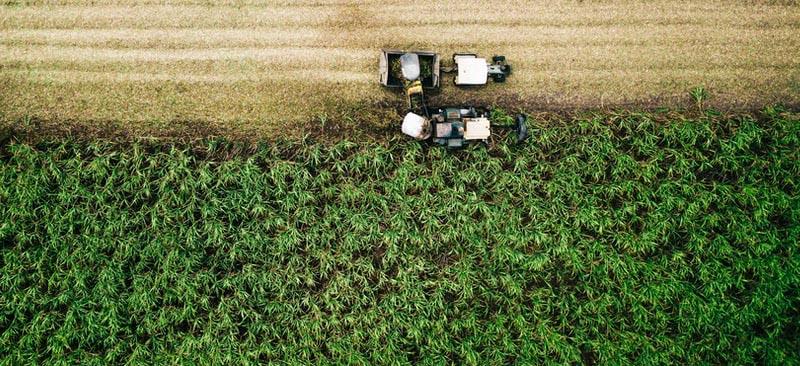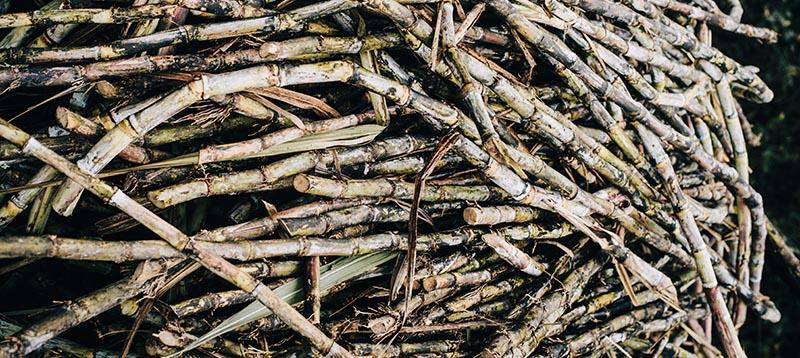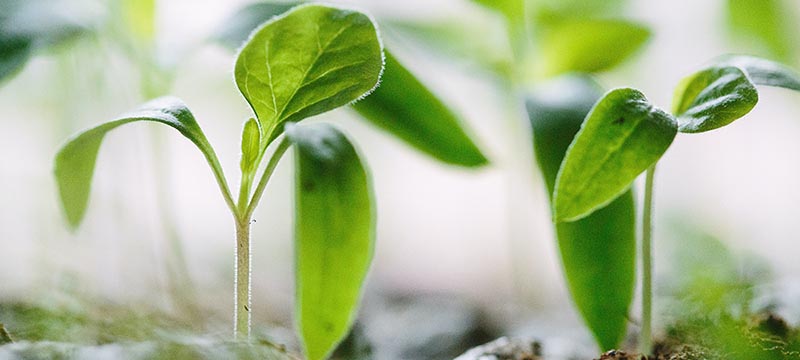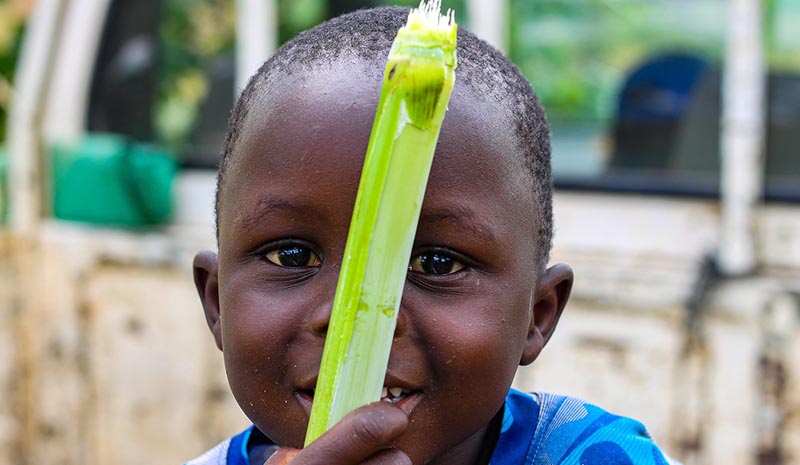In this guide, we will explore:
- What is sugarcane fiber and bagasse?
- How is sugarcane fiber produced?
- What are the environmental benefits of sugarcane fiber?
- What is sugarcane fiber used in??
- How does sugarcane fiber compare to alternative packaging?
- Will sugarcane fiber work for my business?

What is sugarcane fiber and bagasse?
Sugarcane fiber is also called sugarcane bagasse or just bagasse. It’s the fibrous part of a sugarcane stalk that’s left over after extracting the juice. Often this part of the sugarcane is discarded, incinerated or used as a fuel source for sugar mills.
Transforming sugarcane stalks into products is giving them a new life as raw materials. Because it uses a non-edible byproduct of a food production, this material is considered an extremely renewable resource.
A variety of different products can be produced from bagasse, including paper products, paper packaging products and even to-go boxes, bowls, and trays.
How is sugarcane fiber produced?
The process of converting raw sugarcane into a sustainable product is much more straightforward than you might think.

Step One: Production starts by extracting all the juice and nutritional components from the harvested sugarcane stalks. Only the bagasse fibers are left remaining after the extraction.
Step Two: Next the fibers are finely blended with water. This process creates a pulp with a consistency similar to wood pulp.
Step Three: Pressure and heat is added to transform and mold the pulp into a variety of different products.
When analyzed, the plant polymer makeup of bagasse is as follows:
- Cellulose
- Hemicellulose
- Lignin (a complex organic polymer)
- Ash
- Extra Waxes
This material makeup creates a versatile, eco-friendly plant material that has a wide variety of uses.
What are the environmental benefits of sugarcane fiber?
Twenty million trees are cut down every single year just to manufacture paper cups. Most of those cups are coated in polyethylene, a derivative of fossil fuels. What's worse, one single paper cup takes longer than 20 years to break down in a landfill.
Additionally, around 40% of the wood that we harvest is used for commercial and industrial applications. This overuse of wood leads to biodiversity loss, deforestation, water pollution and contributes to greenhouse gas emissions.
By providing an alternative to tree-based paper products, sugarcane fiber presents immense potential.

Eco-friendly materials possess three characteristics: They’re renewable, biodegradable, and compostable. Sugarcane fiber is all three.
Renewable – Around 1.2 billion tons of sugarcane are produced annually. From this, 100 million tons of bagasse are created each year. While some of this bagasse is burned as biofuel, much is discarded. Bagasse packaging production finds a new purpose for this agricultural byproduct that would otherwise have been disposed of reducing waste and supporting farmers.
Biodegradable – We wish that all products ended up in local composting facilities but the reality is they often do not. It’s essential to plan for the reality of products ending up in landfills and on the side of the road. Biodegradability ensures that a product can break down on its own over time. Sugarcane fiber can biodegrade within 30 to 90 days.
Compostable – In commercial composting facilities, post consumer sugarcane products can break down even faster. In as little as 60 days, bagasse can be composted entirely. When composted, bagasse turns into a nutrient-rich fertilizer of nitrogen, potassium, phosphorus, and calcium.
Sugarcane fiber is now prominent in the ethical material sphere, and it’s being used in several different industries and products.
What is sugarcane fiber in?
Sugarcane fiber or bagasse is used to produce:
- packaging products
- food packaging products
- paper
- textiles
- biofuel
Sugarcane fiber can replace the materials commonly used to make cardboard boxes, plywood, and particleboard. As a newspaper alternative, it reduces wood usage by more than 52%.

How does sugarcane fiber compare to alternative packaging?
Sugarcane fiber is an excellent replacement for paper products, as well as, Styrofoam and plastic packages.
Styrofoam is a known environmental hazard, and it presents human health hazards, too. It takes 500 years or more to break down and consumes 30% of the space in every landfill. Moreover, 20% of Styrofoam doesn’t end up in a landfill at all, instead polluting our oceans and littering our ground.
Despite legislation in several states banning polystyrene foam, its popularity persists. Its acceptance is mostly due to the fact that it’s lightweight and cost effective and can maintain internal temperature.
Sugarcane fiber products present a comparable and affordable alternative to foam and paper products in the food packaging world. They also boast a wide range of other benefits:
- Tolerant of high temperatures (up to 200°F)
- Grease and water resistant
- Durable
- Freezer safe
- High insulation properties (internal temperature maintenance)
Some studies suggest that fruits and vegetables stored in sugarcane fiber packaging have longer shelf lives. Because bagasse fiber is highly porous, it also absorbs extra moisture and promotes breathability and a drier environment for produce.
Our sugarcane fiber products perform as well as wood fiber products, and are produced to FDA food guidelines. Sugarcane fiber packaging is a sustainable and environmentally friendly alternative that is durable, insulating, and impervious to high temperatures. Head to head, it matches up on the must-haves when compared with petroleum-based plastic containers, and it’s cost effective too.
Will sugarcane fiber work for my business?
If your food business currently uses paper, wood pulp, polystyrene foam or plastic, bagasse is definitely worth considering. If you’re passionate about sustainability and offering renewable, biodegradable products to your customers, sugarcane fiber packaging is a fantastic option.
If you'd like to try any of our sugarcane products, we offer an extensive collection of free samples.
Contact our team to find out how to meet your packaging needs with the most eco-friendly materials on the market.


